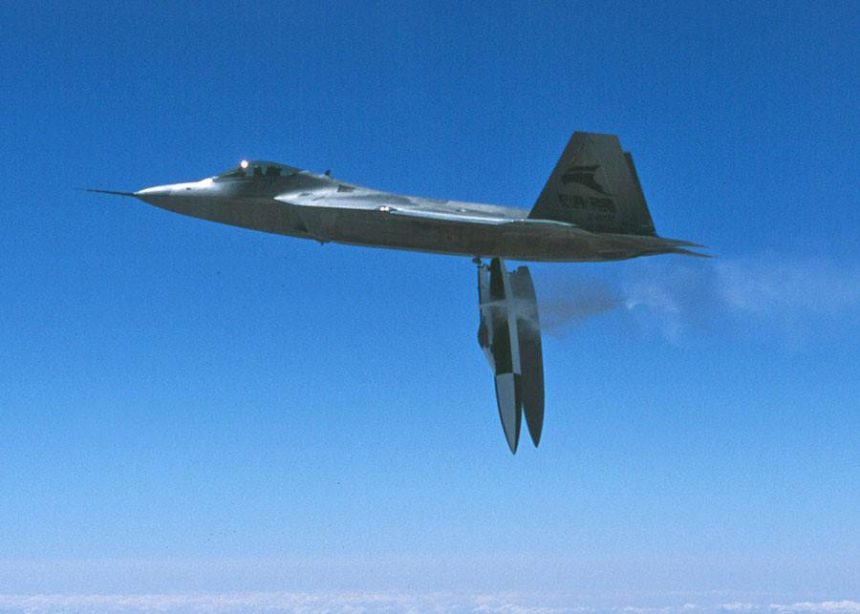This is how an F-22 Raptor jettisons drop tanks.
Even if it has internal weapons bays, the F-22 Raptor stealth fighter plane relies on unstealthy fuel tanks when it needs to increase its range. Obviously, air-to-air refueling from a tanker is an option but since aerial refuelers are not always available, peacetime operations and deployments are normally conducted with external tanks carried on the underwing pylons.
But, if the operation required (almost) complete invisibility to radars (or should the need arise) fuel tanks would be jettisoned and the scene would be more or less as the one depicted in the image in this post taken in 2004 during the first F-22 inflight external tank jettison test.
Actually, jettisoning tanks would not give the aircraft “full stealthiness”: when the aircraft jettisons its tanks, the orifices under the wing for pylon attach bolts, fuel lines, electrical connectors, jettison pivot fittings are exposed and can become RCS “hotspots”, rendering the jet less than completely stealthy.
When pylons are not fitted, RAM covers are placed over the orifices.









